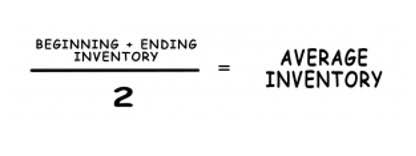FIFO vs LIFO Which is the Best Inventory Valuation Method?

Your inventory doesn’t expire before it’s sold, and so you could use either the FIFO or LIFO method of inventory valuation. Companies with perishable goods or items heavily subject to obsolescence are more likely to use LIFO. Logistically, that grocery store is more likely to try to sell slightly older bananas as opposed to the most recently delivered.

Strategic Use of LIFO Inventory Methods
This method dictates that the last item purchased or acquired is the first item out. This results in deflated net income costs and lower ending balances in inventory in inflationary economies compared to FIFO. In most cases, LIFO will result in https://www.bookstime.com/ lower closing inventory and a larger COGS.

Why You Can Trust Finance Strategists
Since the cost of labor and materials is always changing, FIFO is an effective method for ensuring current inventory reflects market value. Older products are assumed to have been purchased at a lower cost, so when they’re sold first the remaining inventory is closer to the current market price. One potential downside to LIFO is that it can lead to higher inventory costs as old items must be replaced frequently. Additionally, businesses may not be able to take advantage of bulk discounts since only a few items are purchased at a time. FIFO is straightforward and intuitive, making it popular as an accounting method and useful for investors and business owners trying to assess a company’s profits.

Why Is LIFO Accounting Banned in Most of the World?
It’s only permitted in the United States and assumes that the most recent items placed into lifo formula your inventory are the first items sold. Under LIFO, you’ll leave your old inventory costs on your balance sheet and expense the latest inventory costs in the cost of goods sold (COGS) calculation first. While the LIFO method may lower profits for your business, it can also minimize your taxable income. As long as your inventory costs increase over time, you can enjoy substantial tax savings.
- While FIFO and LIFO sound complicated, they’re very straightforward to implement.
- Businesses would select any method based on the nature of the business, the industry in which the business is operating, and market conditions.
- There are balance sheet implications between these two valuation methods.
- This is a more practical and efficient approach to the accounting for inventory which is why it is the most common approach adopted.
- If the price of goods has increased since the initial purchase, the cost of goods sold will be higher, thus reducing profits and tax liability.
- With the FIFO cost flow assumption, the first costs become the cost of finished goods.
FIFO is calculated by adding the cost of the earliest inventory items sold. The price of the first 10 items bought as inventory is added together cash flow if 10 units of inventory were sold. The cost of these 10 items may differ depending on the valuation method chosen.
